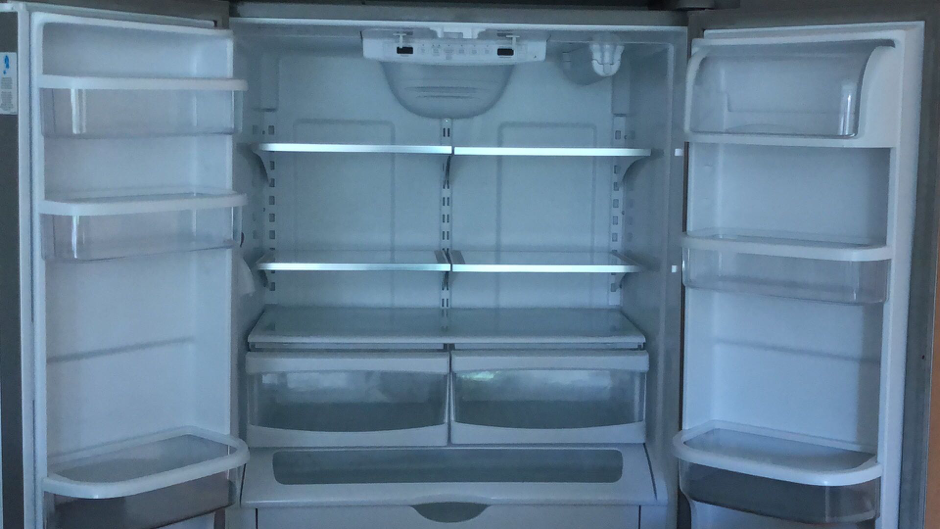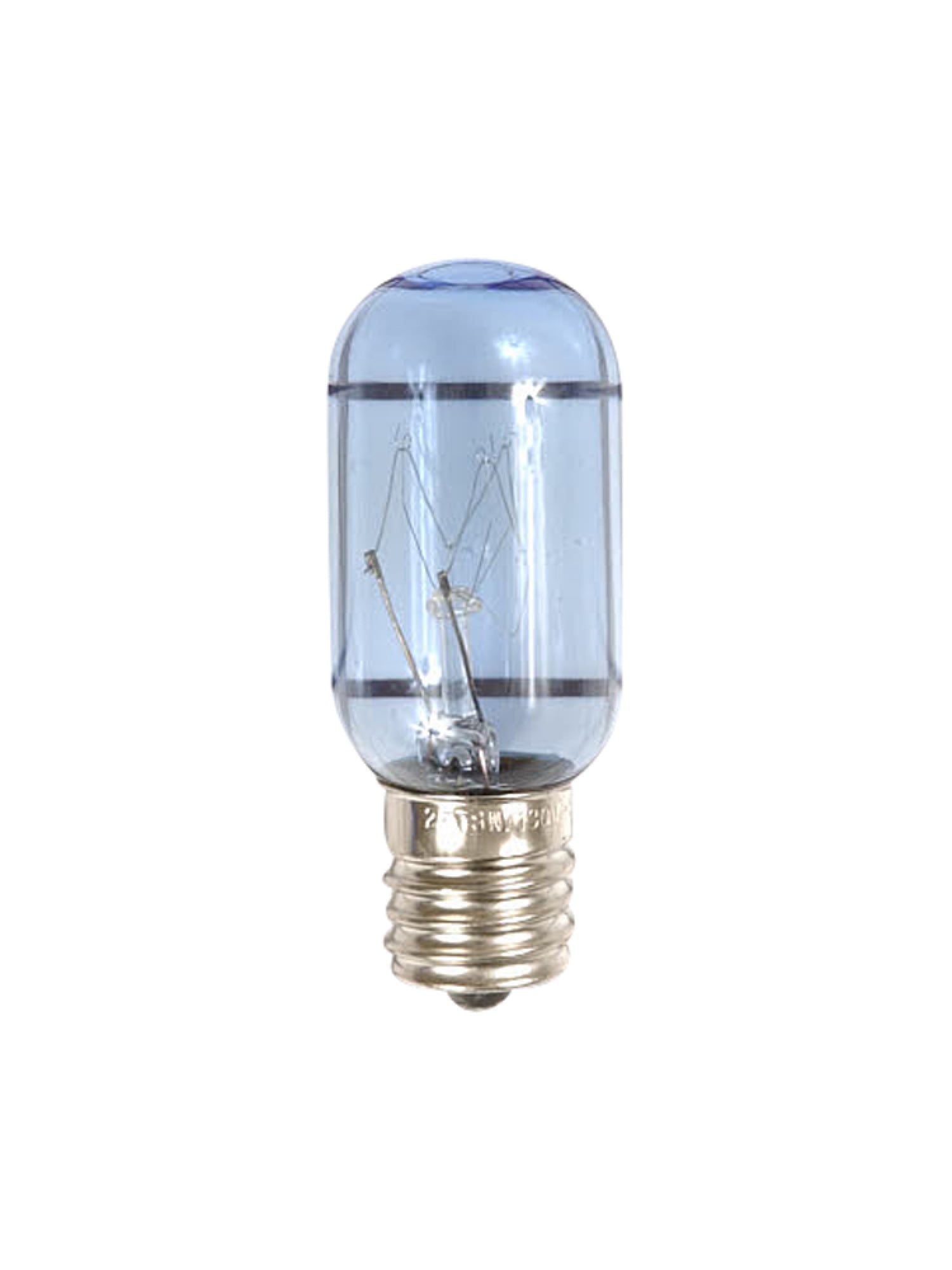If you've opened your KitchenAid refrigerator and noticed that the light isn't turning on, don't panic. There are a few simple steps you can take to troubleshoot and fix this problem on your own.How to Fix a Refrigerator Light That Won't Turn On
The most common reason for a refrigerator light not working is a burnt out light bulb. The first thing to check is if the light bulb needs to be replaced. To do this, you'll need to locate the light bulb inside your refrigerator. It is usually located in the top or back of the refrigerator and can be accessed by removing the plastic cover or lens. Once you've located the light bulb, remove it and replace it with a new one. Make sure to use a bulb with the same wattage and size as the original.How to Replace a Refrigerator Light Bulb
If replacing the light bulb doesn't solve the problem, there may be an issue with the light socket or switch. Start by checking the light socket for any signs of damage or corrosion. If the socket looks damaged, it will need to be replaced. You can order a replacement light socket from the manufacturer or a local appliance repair shop. If the socket looks fine, the next step is to check the light switch.Troubleshooting a Refrigerator Light Not Working
The light switch is a small button or lever that is activated when the refrigerator door is opened. Over time, the switch can become faulty and will need to be replaced. To test if the switch is the problem, use a multimeter to check for continuity. If the switch does not have continuity when pressed, it will need to be replaced. You can order a replacement switch from the manufacturer or a local appliance repair shop.Common Causes for a Refrigerator Light Not Working
If you have recently changed the light bulb or replaced the light socket or switch, you may need to reset the light on your KitchenAid refrigerator. To do this, unplug the refrigerator for a few minutes and then plug it back in. This will reset the control board and may fix the issue. If the light still does not turn on, you may need to call a professional for further assistance.How to Reset the Light on a KitchenAid Refrigerator
If you have determined that the light socket is the problem, you can replace it yourself with a few simple steps. Start by unplugging the refrigerator and removing the light bulb. Next, remove the plastic cover or lens that covers the light socket. You may need to use a flathead screwdriver to pry it off. Once the cover is removed, you can unscrew the old light socket and disconnect the wires. Connect the wires to the new light socket and screw it back into place. Lastly, put the cover or lens back on and plug the refrigerator back in.Replacing the Light Socket in a KitchenAid Refrigerator
If the light switch is the problem, you can easily replace it yourself with a few simple tools. Start by unplugging the refrigerator and removing the light bulb. Next, remove the cover or lens that covers the light switch. You may need to use a flathead screwdriver to pry it off. Once the cover is removed, you can unscrew the old light switch and disconnect the wires. Connect the wires to the new light switch and screw it back into place. Finally, put the cover or lens back on and plug the refrigerator back in.How to Replace the Light Switch in a KitchenAid Refrigerator
If you're not sure if the light switch is the problem, you can test it with a multimeter. Start by unplugging the refrigerator and removing the light bulb. Next, remove the cover or lens that covers the light switch. You may need to use a flathead screwdriver to pry it off. Once the cover is removed, use the multimeter to check for continuity when the switch is pressed. If there is no continuity, the switch is faulty and will need to be replaced.How to Test the Light Switch in a KitchenAid Refrigerator
If the light bulb socket is the problem, you can replace it easily with a few simple steps. Start by unplugging the refrigerator and removing the light bulb. Next, remove the plastic cover or lens that covers the light bulb socket. You may need to use a flathead screwdriver to pry it off. Once the cover is removed, you can unscrew the old socket and disconnect the wires. Connect the wires to the new socket and screw it back into place. Finally, put the cover or lens back on and plug the refrigerator back in.Replacing the Light Bulb Socket in a KitchenAid Refrigerator
If you've tried all of the above steps and your KitchenAid refrigerator light still won't turn on, there may be a more serious issue at hand. It's best to call a professional appliance repair technician to diagnose and fix the problem. They will have the necessary tools and knowledge to properly troubleshoot and repair your refrigerator light. In conclusion, a refrigerator light not working can be a simple fix or a more complicated issue. By following these steps, you can troubleshoot and fix the problem yourself or determine if you need to call a professional for assistance. Keeping your refrigerator light in working order is important for seeing what's inside and avoiding any potential food spoilage. So don't delay in addressing this issue and get your KitchenAid refrigerator light working again in no time!How to Troubleshoot a KitchenAid Refrigerator Light That Won't Turn On
Kitchen Aid Refrigerator Light Not Working: The Importance of Proper Lighting in House Design

Why Lighting Matters in House Design
 Lighting is often overlooked when it comes to house design, but it plays a crucial role in creating a functional and visually appealing space. A well-lit room can make a space feel larger, highlight architectural features, and set the mood for different activities. On the other hand, a poorly lit room can feel cramped, dull, and uninviting. This is why it is important to address any lighting issues, such as a
non-working kitchen aid refrigerator light
, as it can greatly affect the overall design of your home.
Lighting is often overlooked when it comes to house design, but it plays a crucial role in creating a functional and visually appealing space. A well-lit room can make a space feel larger, highlight architectural features, and set the mood for different activities. On the other hand, a poorly lit room can feel cramped, dull, and uninviting. This is why it is important to address any lighting issues, such as a
non-working kitchen aid refrigerator light
, as it can greatly affect the overall design of your home.
The Impact of Kitchen Lighting
 The kitchen is often referred to as the heart of the home, and for good reason. It is where we gather to prepare and enjoy meals with our loved ones. Therefore, the lighting in this space is crucial as it not only affects the functionality but also sets the ambiance for this important gathering place.
Kitchen aid refrigerator lights
are an important component of this, as they provide additional lighting for food preparation and storage. When these lights are not functioning properly, it can make tasks in the kitchen more challenging and affect the overall design of the space.
The kitchen is often referred to as the heart of the home, and for good reason. It is where we gather to prepare and enjoy meals with our loved ones. Therefore, the lighting in this space is crucial as it not only affects the functionality but also sets the ambiance for this important gathering place.
Kitchen aid refrigerator lights
are an important component of this, as they provide additional lighting for food preparation and storage. When these lights are not functioning properly, it can make tasks in the kitchen more challenging and affect the overall design of the space.
Common Causes for Kitchen Aid Refrigerator Light Not Working
 There are a few reasons why your
kitchen aid refrigerator light
may not be working. The most common cause is a burnt-out light bulb, which is an easy fix. Simply replacing the bulb can solve the issue. Another common cause is a faulty light switch, which may require a professional to fix. In some cases, the problem may be with the wiring or the light socket itself, which may require more extensive repairs.
There are a few reasons why your
kitchen aid refrigerator light
may not be working. The most common cause is a burnt-out light bulb, which is an easy fix. Simply replacing the bulb can solve the issue. Another common cause is a faulty light switch, which may require a professional to fix. In some cases, the problem may be with the wiring or the light socket itself, which may require more extensive repairs.
Addressing the Issue
 If you are experiencing issues with your
kitchen aid refrigerator light
, it is important to address them promptly. Not only does it affect the functionality and design of your kitchen, but it can also be a safety hazard. Replacing a light bulb is a simple fix that can be done by most homeowners. However, if the issue is with the wiring or light switch, it is best to consult a professional to ensure the problem is properly resolved.
If you are experiencing issues with your
kitchen aid refrigerator light
, it is important to address them promptly. Not only does it affect the functionality and design of your kitchen, but it can also be a safety hazard. Replacing a light bulb is a simple fix that can be done by most homeowners. However, if the issue is with the wiring or light switch, it is best to consult a professional to ensure the problem is properly resolved.
Incorporating Proper Lighting in House Design
 When designing or renovating a house, it is important to consider all aspects of lighting. This includes natural light, artificial light, and task-specific lighting. Incorporating a variety of lighting sources, such as overhead lights, task lights, and accent lights, can greatly enhance the functionality and design of a space. Additionally, choosing energy-efficient options, such as LED lights, can also save on electricity costs in the long run.
When designing or renovating a house, it is important to consider all aspects of lighting. This includes natural light, artificial light, and task-specific lighting. Incorporating a variety of lighting sources, such as overhead lights, task lights, and accent lights, can greatly enhance the functionality and design of a space. Additionally, choosing energy-efficient options, such as LED lights, can also save on electricity costs in the long run.
Conclusion
:max_bytes(150000):strip_icc()/refrigerator-light-not-working-1908658-03-3ddb1d9f94c44654b82819c40057ea53.jpg) In conclusion, lighting plays a crucial role in house design and should not be overlooked. A
non-working kitchen aid refrigerator light
may seem like a minor issue, but it can greatly affect the functionality and design of your kitchen. It is important to address any lighting issues promptly and consider incorporating a variety of lighting sources in your overall house design for a functional and visually appealing space.
In conclusion, lighting plays a crucial role in house design and should not be overlooked. A
non-working kitchen aid refrigerator light
may seem like a minor issue, but it can greatly affect the functionality and design of your kitchen. It is important to address any lighting issues promptly and consider incorporating a variety of lighting sources in your overall house design for a functional and visually appealing space.










:max_bytes(150000):strip_icc()/refrigerator-light-not-working-1908658-03-3ddb1d9f94c44654b82819c40057ea53.jpg)























































































